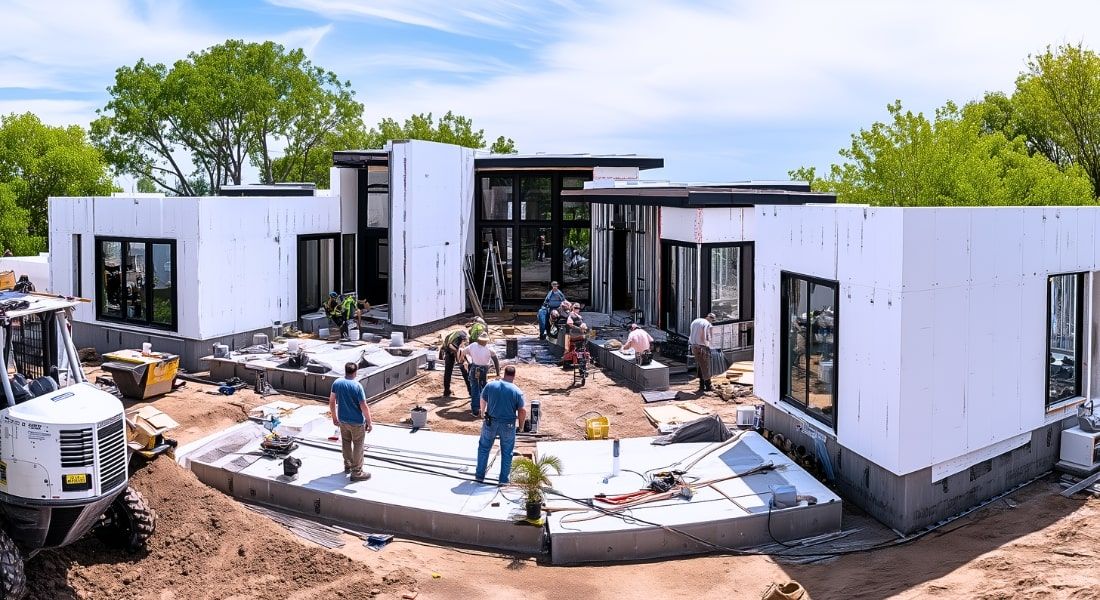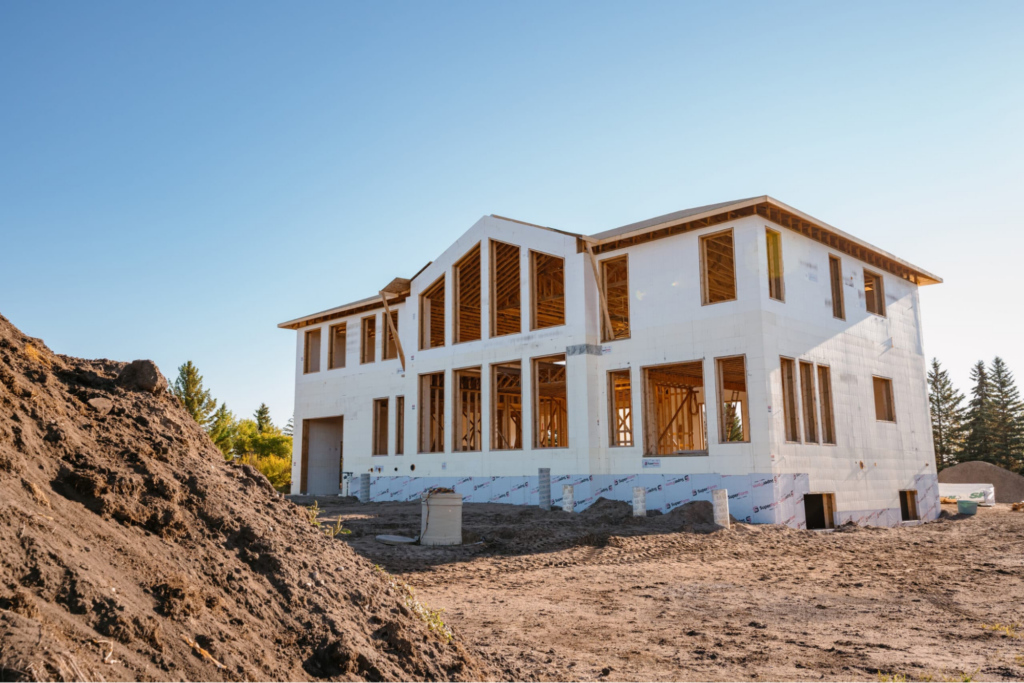Streamlining Residential Projects Using ICF Solutions Part 1
The adoption of insulated concrete form (ICF) construction is growing rapidly across modern residential projects. From custom single-family homes to multi-unit apartment buildings, builders and developers are turning to ICF solutions for their efficiency, durability, and design flexibility. These structures offer significant long-term value, making them an increasingly popular choice for residential construction.
What many professionals may not immediately consider is how ICF solutions can help streamline the construction process itself. By accelerating timelines and simplifying workflows, ICFs give contractors a competitive advantage. A faster build means earlier occupancy, and that can directly translate to reduced overhead and quicker returns. Additionally, projects that minimize labor demands and material coordination are often more cost-effective and easier to manage.
How can architects, engineers, and builders utilize ICF systems to streamline their residential projects? In the sections that follow, we explore the practical ways ICF construction supports faster, smarter, and more predictable building projects.
How ICF Systems Streamline Residential Construction Workflows
One of the most effective ways to streamline a residential project is to select insulated concrete form (ICF) construction from the outset. ICF systems combine multiple stages of the wall-building process into a single, unified operation, significantly reducing labor complexity and improving project efficiency from the ground up.
With ICF, the formwork is more than a temporary mold. It functions as permanent insulation and a vapor barrier, eliminating the need for separate insulation and air sealing after the pour. Many systems also include integrated attachment strips, allowing interior and exterior finishes to be installed directly onto the wall assembly without the need for additional furring.
Ease of assembly is a core strength of ICF. The blocks are lightweight and interlock in a predictable, modular fashion, making them easy to handle and install, even with smaller crews. Compared to traditional framing or concrete systems, ICF walls can be assembled more quickly and with fewer errors, helping builders maintain tighter control over their construction schedule. The consistency of the process also reduces reliance on specialized trades, which is particularly valuable in today’s labor-constrained market.
ICF construction also offers resilience against weather-related delays. Unlike wood framing, which can swell, warp, or absorb moisture, insulated concrete forms are much less affected by rain, heat, or humidity. This allows crews to continue work in a broader range of site conditions without compromising quality or productivity.
In total, ICF systems come with built-in efficiencies that naturally support faster and more consistent construction. However, realizing the full potential of ICF requires thoughtful planning and execution, principles we’ll explore in the following sections.
Plan to Leverage ICF Advantages From the Beginning
Insulated concrete forms offer inherent efficiencies, but their full value is best realized when planning begins with the ICF system in mind. Treating ICFs as a one-to-one substitute for wood framing or conventional formwork can lead to design inefficiencies and missed opportunities during the construction process.
To optimize the advantages of using ICF, design professionals and builders should coordinate from the earliest phases. Aligning room layouts, wall heights, and structural geometry with ICF block dimensions enables smoother installation and reduces material waste. SuperForm ICF offers multiple block sizes, cut lines, and accessories that enable designers to minimize on-site adjustments and enhance construction efficiency.
Early collaboration also enhances planning for mechanical, electrical, and plumbing systems. When locations for penetrations and chases are considered in advance, trades can work more efficiently without compromising the integrity of the concrete core. This preserves air-tightness and reduces costly retrofitting later.
Even finish materials benefit from upfront planning. Knowing where attachment strips are located helps teams select and install compatible finishes more efficiently. By embedding ICF into the design process from the beginning, teams gain greater control over budget, scheduling, and performance.
Ensure Efficient Job Site Management
Job site management plays a critical role in the success of any ICF build. A poorly organized site can lead to delays, damaged materials, and workflow disruptions. With proper planning, SuperForm ICF systems can help streamline construction timelines while maintaining high-quality standards.
Key best practices to ensure efficiency in job site management include:
- Layout planning: ICF blocks are lightweight but bulky. Ensure clear staging areas are maintained near points of use to minimize handling time.
- Material protection: Prolonged exposure to rain or direct sunlight can compromise the quality of the block surface. Covered storage or just-in-time delivery schedules help reduce weather-related risks.
- Crew training: Teams unfamiliar with ICF may make costly mistakes in cutting, bracing, or assembly. Training workers on handling techniques, waste reduction, and sequencing helps prevent issues before they occur.
Well-prepared sites are more efficient and safer. When supported by trained crews and a logical workflow, SuperForm ICF contributes to faster assembly and fewer costly delays throughout the various phases of the build.
Build Better, Faster, and Smarter With ICF
SuperForm ICF empowers project teams to deliver high-performance structures with fewer delays, stronger envelopes, and greater design flexibility. By planning early, managing the job site efficiently, and equipping your crew with the right tools, you can unlock the full potential of ICF for residential and commercial construction.
Ready to take your ICF knowledge further?
Continue reading [Part 2: Advanced Strategies for Optimizing ICF Performance on Complex Builds] to explore:
- Best practices for integrating window and door openings
- How to leverage specialty blocks and system features
- Ways to reduce waste and increase speed in custom architecture
Whether you’re designing sleek modern homes or managing multi-phase commercial projects, Part 2 delivers the insights you need to maximize results with SuperForm ICF.




-min.jpg)
